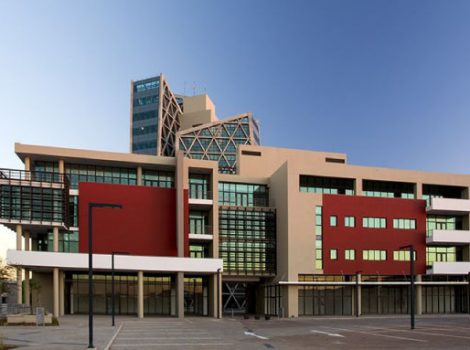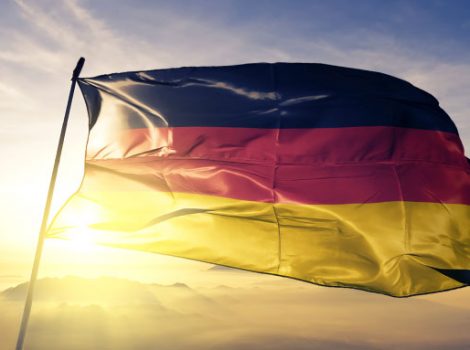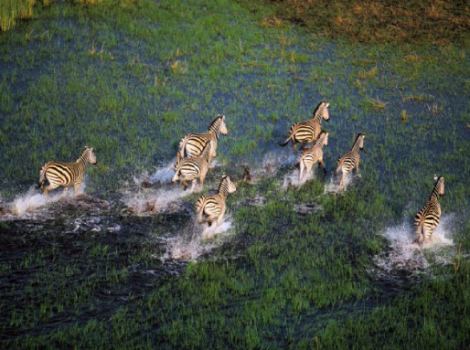
While a self-drive trip through Botswana is a real adventure, it can be equally as daunting. Whether you want to camp in Botswana’s unfenced wilds, follow elephant herds across the Chobe or hitch a ride in a mokoro and explore the Okavango Delta, this guide will help you plan your best ever Botswana trip. Avid South African campers and other independent travel enthusiast will particularly enjoy this type of holiday.
We’ve put together some pointers to help you plan your self-drive holiday to Botswana
Proper Preparation Prevents Poor Performance – a mantra most expert professional guides swear by. This very much applies to planning a self-drive itinerary too, whether you’re planning a route on Botswana’s main roads or an adventure through the parks!
1. Contemplating a self-drive itinerary through Botswana incorporating its National Parks is not to be underestimated and can be seen as an authentic “cultural experience”. Maintain a sense of adventure and take all that is African in your stride, including long delays to the often comical communication glitches.
Self-drive holidays involve you taking control of planning your holiday. As such, you don’t have to rely on tour operators, travel agents, public transport or chartered travel services to get around.
2. Embarking on a self-drive affords you the opportunity to explore your destinations at your own pace. It offers you and your family and friends, whoever you’re travelling with, more comfort and it is often substantially cheaper than booking through an agent.
3. The season during which you decide to travel is also very important. There is only a short window of opportunity because the summer months – the rainy season – is not at all recommended for all areas in Botswana as there’s the risk of getting stuck in the mud for hours if not days. Also, consider the winter months – the dry season, flood levels are high – if the Delta is on the itinerary.
Depending on the size of the flood, most of the roads are closed and bridges overrun by the flood waters, therefore decreasing the area that can be navigated and explored. Towards the end of the dry season, the temperatures skyrocket so all the sandy roads become very thick and very sticky and unless the clients know what they’re doing with their gearbox and tyre pressure, getting stuck is almost certainly guaranteed.
4. Fans of self-drive breaks have a lot to look forward to in Botswana. Famous for its untouched and diverse wildlife that freely roam the country, many of Botswana’s national parks are unfenced, or at least minimally fenced. This means you’re very likely to see a lot of animals while driving from one destination to the next.
Free-ranging wildlife is another element of self-drive itineraries that is very exciting. All parks in Botswana are unfenced (as are all of the neighbouring countries except South Africa), which means animals are free to roam and they do this to their hearts’ content.
You will need to have some basic understanding of animal behaviour and know that animals always have right of way. It’s not only the wildlife that uses these road networks, but also a huge amount of domestic livestock, which move between grazing and water sources. As such, you will not only need to have the utmost respect for all animals but driving at night should always be avoided.
5. Opting for a self-drive holiday offers you the flexibility to chop and change your itinerary at will, as and when the need arises.
Good to know! The Chobe National Park in Kasane is minimally fenced thus allowing you the opportunity to see the elephants, wild dogs and other wildlife that are regularly spotted by road users crossing the road. The Kalahari Transfrontier Park – split between South Africa and Botswana – is also worth a visit. The Botswana side has far more animals than the South African section and is also not fenced, making encounters with animals much more likely.
6. Travellers heading to Botswana from Johannesburg can rest assured that the road between Jo’burg and Kasane has recently been improved, meaning you don’t have to worry about the quality of the major routes linking South Africa and Botswana.
Good to know! Hertz Rent a Car has several branches in Botswana. These branches stock a range of trustworthy 4×4’s that you can rent. The road network is very limited with single lane highways, no hard shoulders and minimal road signs, so don’t consider the holiday ruined if you encounter challenges along the way or things don’t go according to plan – it’s all part of the adventure.
7. Exploring Botswana on a self-drive is becoming more and more popular. However, it is not for the faint-hearted nor is it for the ill-prepared. It’s easy for people to think just because they’ve done a self-drive holiday in Namibia and South Africa, Botswana will be a breeze. Botswana is a totally different level of adventure.
Unfortunately, Botswana cannot be compared to South Africa or Namibia where the roads (and road signs) are generally very good and the whole experience is pretty straightforward and uncomplicated. Botswana is actually a fly-in destination. There is 18,482 km worth of beautiful highways, but only a quarter of these, 4343 km, are paved or tarred, which is not to say those don’t get flooded nor are they always kept in good condition.
It can easily take 4-5 hours to cover 100km – due to the road conditions, animal movements and your knowledge of challenging 4×4 driving. No matter how fancy and well-fitted your vehicle, if you have no idea how to put it into 4 wheel drive let alone low range or diff lock and you’re stuck in 2 wheel drive, you will not get out. Revving the engine, burning the gearbox and spinning the wheels will not get you out any quicker.
The stress of knowing you’ve got an international flight to catch but you’re stuck out in the middle of the bush, trying to dig your way out of the sand doesn’t bear thinking about. That’s why tour operators strongly recommend that you allow for a pre-night in town before flying out!
Driving and Botswana roads condition information
Below is some of the basic information you might need about general road conditions, the types of roads you may encounter and driving information on your self-drive safari. Always check with the relevant sources for the most up to date information.
Tar – Tarmac roads in Botswana are generally good but watch out for the occasional pothole. Be extremely alert for animals on the roads and avoid driving at night at all costs. Drive slowly past all animals and be particularly aware of livestock and wildlife in the thick bush or grass next to the roads.
Gravel – Keep to a reasonable speed as there may be rutted sections or potholes. Heavy braking on loose gravel can cause the vehicle to ‘aquaplane’. Keep your eyes out for wildlife and livestock which may run across the road without warning.
Sand – Most sandy roads are easy to navigate in high range 4×4. In the hot months, it may be necessary to use low range 4×4 for short distances. The secret to driving in the sand is to lower the tyre pressure to create a bigger ‘footprint’. Once your tyres are at the correct pressure, the vehicle moves easily through thick sand. BUT be sure to re-inflate your tyres when back on hard surfaces.
Mud – During the rainy season (November-April), some of the roads in Botswana become impassable due to the mud, also known as black cotton soil. Avoid it at all costs – if you get stuck, you won’t be able to dig yourself out and if you are in a remote area you could be stuck for weeks. Look to see if previous passersby have made a diversion around the problem section. If so, follow it.
Water – Water crossings can be deeper than you think. Do not attempt to drive through any water crossing without first walking through it –check carefully for hippos and crocodiles.
Fuel – There is no fuel as you head through the bush between Maun and Kasane. In an absolute emergency, the lodges may be able to provide you with food or fuel – but at a greatly inflated price and usually only after seeking permission from headquarters in Maun. Rakops often runs out of fuel so don’t depend on it.
Dos and don’ts to consider on a self-drive…
Do! Be open-minded and flexible. Driving in Botswana is not as easy as you may think. Road conditions can be challenging in many areas and include soft sand, slippery clay, deep water and broken bridges. Getting stuck or breaking an essential part of your vehicle happens easily and often.
Do!Be prepared. Plan your route carefully and don’t underestimate the time it may take to cover those distances. Make sure you have rented the correct type of vehicle and your car has all the necessary equipment from high-lift jack to a spade and most importantly, a GPS (download the tracks4africa app which works OFFLINE!) and ideally, bring along a satellite phone. You will be in remote areas with no cell phone signal and the next car coming might be days away.
Do!Carry more spares and extras than you think you’ll ever need – i.e. fuel, water and tyres without overloading your car.
Do!Have a nicely stocked medical kit with you – the smallest cut can quickly turn into something nasty in the right conditions.
Do!Treat officials and bureaucrats with respect. Losing your temper never gets you anywhere. Remember the 3 Ps: politeness, patience and perseverance.
Be aware of rules and regulations: Botswana has so-called vet fences which prevent the spread of highly contagious diseases such as Foot and Mouth. These fences restrict the movement of any cloven hooved products so you might end up handing in your recently purchased BBQ meats and road snacks to the local officials and you will not win any argument with them.
Do!Ideally travel in convoy. If you change your plan and arrive a day later or not at all at the next pre-booked accommodation, please let your tour operator know because they may start a search which can become challenging.
Do not drive off-road! This is prohibited in all National Parks to keep the wilderness pristine and undamaged. Respect those rules also outside the parks. Also driving around a puddle is not always a good idea – if you don’t recognise Mopane forests for the treacherous things they are, then you will inevitably get stuck driving around the puddle rather than taking the road most traveled straight through the middle of the puddle.
Do not drive in the dark.
Do notfeed the animals, this will only encourage them to lose their fear of humans which can end tragically.
Do not leave your vehicle under any circumstances. You do not know the bush nor the animals. You have a better chance of staying alive with access to the safety of your car and the copious supplies of food and water than if you risk taking a walk through the bush and encountering a buffalo. EVERYTHING out there is faster than you are.
Do not lose your sense of humour – Africa will inevitably throw challenges at you and keeping an open mind about it all will prevent you from losing your sense of humour and/or patience.
Do NOT travel unprepared. Study the maps, directions and distances while planning your trip.
Do pre-book all accommodation, Botswana has a very low population density, distances between villages can be huge. If planning a camping trip, campsites have to be booked about 11 months before travelling to avoid disappointment.
1 to remember!Most importantly, Botswana is by far the most challenging destination and can in no way be compared to Namibia, South Africa and even Zimbabwe and Zambia due to the unique circumstances of season, habitats, environmental conditions and lack of infrastructure!
References: mzansilife.co.za, safaridestinations.net



